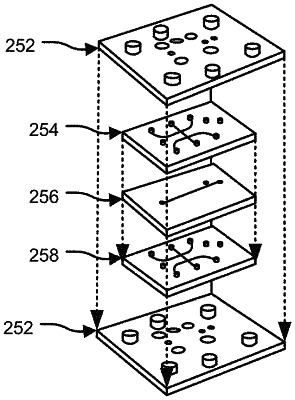| CPC B01L 3/502715 (2013.01) [B01L 3/502707 (2013.01); B01L 3/502761 (2013.01); B81B 1/006 (2013.01); B81C 1/00119 (2013.01); G01N 15/1031 (2013.01); G01N 15/1056 (2013.01); B01L 2200/0647 (2013.01); B01L 2200/12 (2013.01); B01L 2300/0645 (2013.01); B01L 2300/0887 (2013.01); B81B 2201/057 (2013.01); B81B 2203/0338 (2013.01); B81B 2203/04 (2013.01)] | 11 Claims |

|
1. A method for fabricating a microfluidic device, said method comprising the steps of:
coating a negative photoresist on a substrate;
casting of an elastomeric polymer material to form microchannels;
introducing a molten fusible alloy (FA) into a first layer made of the elastomeric polymer material and comprising one or more parallel independent microchannels for corresponding one or more electrodes, wherein the one or more parallel independent microchannels converge at a detection point;
placing the first layer from over a second layer made of the elastomeric polymer material, wherein the second layer is un-patterned and is a sacrificial layer;
fusing the first layer and the second layer with heat such that there are no air bubbles between the first layer and the second layer; and
placing a third layer comprising a flow channel under the first layer such that the flow channel runs orthogonal to the one or more parallel independent microchannels on the first layer,
wherein an object of interest present in a fluid medium passes through the flow channel by itself or to be dispersed as droplets at the detection point, and
wherein the device detects presence of the object of interest based on change in impedance between the one or more electrodes at the detection point.
|